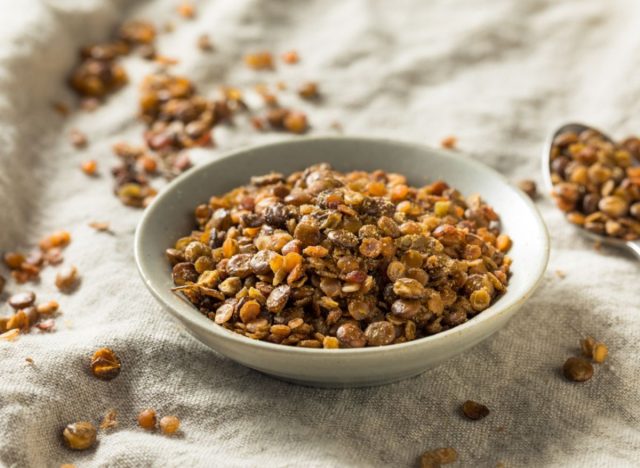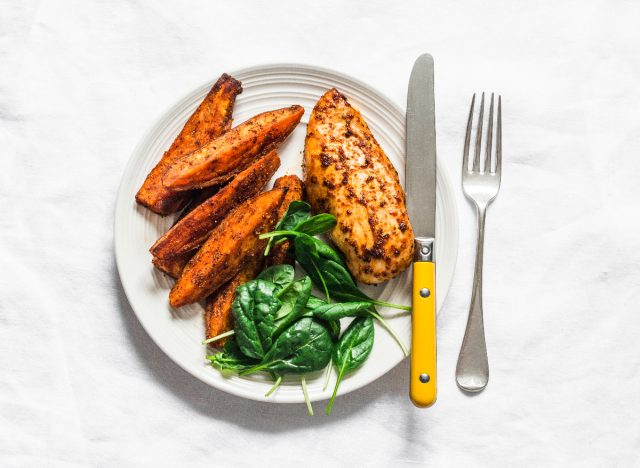7 Ways To Naturally Optimize Your GLP-1 Response & Lose Weight Fast

Glucagon-like peptide 1, more commonly known as GLP-1, is a string of amino acids that are released from the small intestine, as well as the brain and pancreas, when you eat. GLP-1 plays a vital role in managing appetite and blood glucose levels. By increasing GLP-1 levels, you can better support weight loss and diabetes management. The “GLP-1 response” refers to the effects that GLP-1 has on the body. It promotes insulin release to help lower blood sugars after eating, slows digestion to enhance feelings of fullness, and may help manage cravings for specific foods.
When you eat carbohydrates, they’re broken down into glucose, which enters the bloodstream, causing a rise in blood sugar levels. This increase prompts the pancreas to release insulin to lower blood sugar to safe levels. For some people, the body becomes less responsive to insulin, a condition known as insulin resistance, where the body produces more insulin than needed to try and overcome this lack of response. High insulin levels can result in weight gain over time, so it’s important to eat foods and incorporate lifestyle habits that support both blood sugar control and insulin levels.
A core effect of GLP-1 is delayed gastric emptying, meaning food moves slower from the stomach to the small intestine. This prolonged digestion keeps us feeling full for longer, reducing the need to snack and helping control portion sizes, which naturally supports a calorie deficit needed for weight loss.
Another weight loss benefit is GLP-1’s effect on the brain’s reward system, where it can reduce cravings by quieting the running thoughts about food. By calming the urge to eat out of habit, GLP-1 encourages more mindful eating and helps curb emotional eating. Together, these effects make it easier to manage hunger, reduce calorie intake, and make healthier food choices, all supporting sustainable weight loss.
Below are seven strategies to naturally optimize your GLP-1 response to help you lose weight fast.
Embrace healthy fats.

Fat-rich foods move through the digestive system slower than carbohydrates or proteins. Including foods like avocado, a bit of salad dressing, or peanut butter with meals and snacks can slow gastric emptying, similar to the GLP-1 response, and enhance fullness.
Load up on fiber.

Fiber offers numerous health benefits, and like fats, it slows digestion, helping you feel full longer. Add soluble fiber-rich foods, such as beans, lentils, berries, and oats, to your diet to support weight loss and nutrient intake. It’s recommended to increase fiber gradually while staying hydrated to avoid digestive discomfort.
Moderate your carbohydrate portions.

Consuming carbohydrates is an important part of a balanced diet, but large portions of carbs can result in a quick spike in blood sugar, which, over time, may contribute to insulin resistance. By keeping carbohydrate portions moderate, like filling ¼ of your plate with carbs, you can help regulate your blood sugar levels and support your GLP-1 response.
Get moving after meals.

Light post-meal activity, like a 10 to 15-minute walk, can help your body use the sugar from your meal more efficiently. Exercise also makes your body more sensitive to insulin, aiding in blood sugar control. Better blood sugar and insulin balance can make weight loss easier.
Eat consistently throughout the day.

Having regular meals, like breakfast, lunch, and dinner, can help regulate appetite and reduce the tendency to overeat. Going long stretches without eating, like more than four hours between meals, can lead to heightened hunger and make it difficult to control both portion sizes and food choices. If meals are spaced far apart, consider including a fiber-rich snack in between to keep your hunger at bay.
Don’t restrict enjoyable foods.

Labeling certain foods as “bad” and telling yourself that they are off limits often increases cravings and focus on those foods, sometimes leading to overeating when you finally allow yourself to indulge. Allowing enjoyable foods in moderation, like a few times per week, can help reduce cravings and the food noise that can interfere with your weight-loss goals.
Add protein to every meal and snack.

It’s helpful to include a protein source with each meal and snack to help with fullness and reduce the urge to snack between meals. Similar to the GLP-1 response that slows digestion, protein takes longer to break down, contributing to lasting satiety. Incorporating sources such as eggs, yogurt, lean meats, nuts, or legumes provides sustained energy, supporting weight management efforts naturally.









